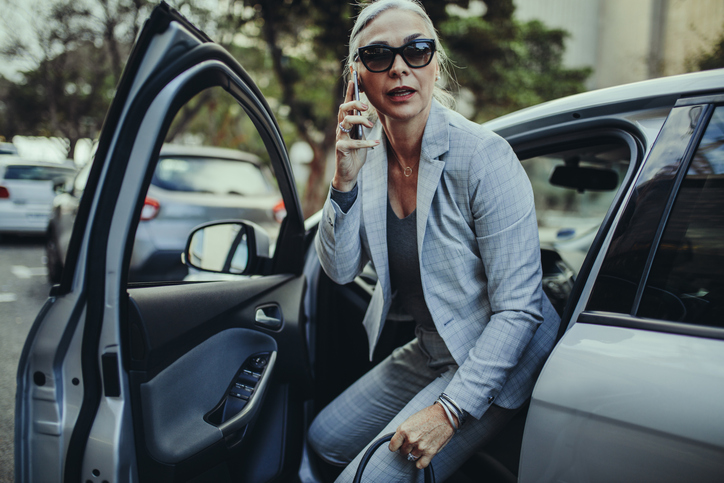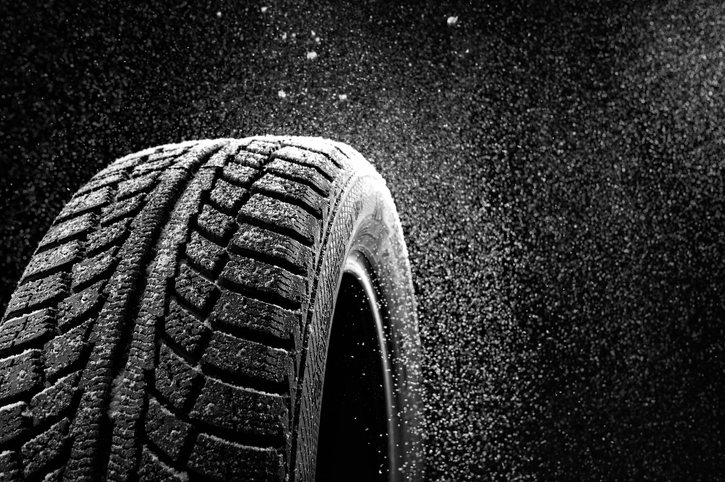Is It Safe to Open Your Door? Parked Cars
Imagine the surprise of the motorist at a collision I once investigated. He parked at the side of the road, opened his door, and a passing car tried to tear it off! It’s a good thing he didn’t step out while he opened the door. Always checked parked cars.
What went wrong here? The motorist didn’t look first, or didn’t see what was overtaking him. He probably felt safe in the fact that he had stopped close to the curb and was out of harm’s way.
In the case of a driver or front seat passenger, there is a mirror present to help see if anything is overtaking the vehicle before you open the door. A quick shoulder check is also a good preventative measure to turn into a habit.
For back seat passengers the rear roof pillar and lack of a mirror can make this task almost impossible.
The Dutch Reach is the best solution for all vehicle occupants use. Open the door with the hand that is on the opposite side of your body from it. This forces your body to rotate toward the door and allows you to look backward through the gap before the door opens very far. If something is there, hopefully there is enough room to avoid a crash.
Today’s highways are no longer designed so that traffic is always on the left side of a parked vehicle. Be cautious of cycle lanes that may be on the right side of parking areas.
Failing to look or see when you open your door poses a significant threat to cyclists often referred to as dooring or being doored. They must use the right hand edge of the roadway and are difficult to see because of their size. The cyclist that slams into an opening car door can be seriously injured.
Cycle lanes designed without a buffer do not eliminate the hazard.
Opening a door from the outside can be a problem as well. It is not uncommon to see a driver walk up to their vehicle and open the door to enter without giving any thought to overtaking traffic. Passing vehicles may be forced to move to the left or stop in order to avoid a collision.
Section 203 of the Motor Vehicle Act forbids opening the door of a motor vehicle on the side available to moving traffic unless and until it is reasonably safe to do so. Once a door on that side is open, it must not be left open for longer than is required to load or unload passengers.
Story URL: https://www.drivesmartbc.ca/collisions/it-safe-open-your-door
What I’ve Learned from a Year of Driver Monitoring
I’ve been driving with eDriving’s Mentor app for about a year now and know that it has made improvements in my skills. I haven’t cracked the top 10% barrier yet, but I’m still trying! The secret to having a high score appears to be trying to anticipate and plan for what is happening around you as you drive.
Speed is the simplest of the driving tasks to follow but does present its challenges. The riskiest of them is the tendency for other drivers to crowd your back bumper. Why some drivers feel the need to do this on multi laned highways is a bit of a mystery to me.
I wonder if telematics can use the automatic emergency braking system on newer cars to monitor this?
Sudden braking incidents can be prevented by maintaining an appropriate following distance and watching the status of traffic lights as you approach the intersection.
Is it a stale green light? Preparing for the stop doesn’t cost you anything as you are going to have to stop anyway. In fact, it can save you money in the long run by reducing wear on the brakes.
Drivers who fill in your front safety margin and then brake to get ready for a turn or make another lane change mean keeping an eye out behind and beside you as you drive. It would be helpful if they thought about signaling their intentions but the majority seem to signal as they move.
Heavy acceleration has not caused any black marks for me since the first one. I’m never in a hurry to be the first vehicle into an intersection after the lights change and I have not had to take evasive action to prevent a collision, yet.
Smooth lane changes are an easy score. Plan ahead, mirror, signal, shoulder check and change. Simple. Again, I’ve never had to make a sudden move because of the actions of another driver, yet.
The last behaviour that the app watches for are sharp turns. Experience, advisory signs and familiarity with your vehicle are a great help with this. When in doubt, too slow is better than too fast.
I’ve mentioned a potential reduction in vehicle maintenance already but there is another way the app helps pay it’s way. Driving for a good score is also driving for economy. Fewer dollars spent on fuel are healthy for both your wallet and the environment.
There is no doubt in my mind that ICBC will eventually be using driver telematics to set insurance rates. Practice now will make it easier to save money on my insurance bill in the future.
Mentor also supplies me with video training tailored to my driving habits. I’m a bit behind in watching the videos, but I’ve both learned something new and reinforced prior knowledge with them.
Over all, I’m pleased that I have taken the time to use the app. I think that it has made me a better and hopefully safer driver.
Story URL: https://www.drivesmartbc.ca/behaviour/what-ive-learned-year-driver-monitoring
Constable Tim Schewe (Retired)DriveSmartBC: Where better than average road users satisfy their curiosity.
Looking for Auto insurance as a high risk driver in Ontario? Visit the high risk auto pros online and get an instant car insurance quote.





